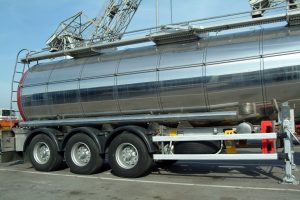There are several types of vehicles specialized in medical transportation. In this case, we can cite the cab conventionné, the vsl or light medical vehicle. These means of transport are increasingly in demand and, of course, the ambulance. Although the roles of these vehicles are the same, it is still essential to choose the type of service you need. To facilitate the choice, however, it is vital to know the specificities of each of these means of transport.
Vsl or Light Medical Vehicle
The vsl is a vehicle intended to transport sick or injured people towards care centers. Unlike an ambulance, the vsl is not designed to transport a person needing urgent care or permanent medical assistance. Indeed, the vsl can only transport seated patients; in this case, we speak of TAP or professionalized seated transport.
When to Use the Services of a vsl?
The need to use a vsl depends on your state of health, and access to this service is by medical prescription. Usually, the vsl is indispensable in the following cases:
- The patient cannot drive or use public transportation
- The patient needs to respect specific hygiene rules
- The patient needs to be accompanied to move around (the vsl can carry up to three passengers).

How Much Does the Service Cost?
In general, the cost of this type of medical transport service differs from one region or department to another. It is based on the cost per kilometer and the cost of the service, the amounts of which are available from the health authorities in your area.
Moreover, thanks to health insurance, expenses related to the vsl can be reimbursed up to 65%.
Cab With an Agreement
A conventioned cab is a classic cab that has been approved by the CPAM or primary health insurance fund to transport patients. In this case, the transport conditions are identical to those of the vsl.
This type of transport is mainly used for patients with long term illnesses who require several appointments with the doctor or hospital:
Chemotherapy or Radiotherapy
Control, analysis, or consultation following an accident
Medical transportation of more than 150 km
Appointment for a treatment requiring at least four trips
To benefit from this service, the doctor must certify that the patient’s state of health does not allow him/her to use public transport. The agreement concluded with the CPAM covers most or all of the travel costs.
The ambulance
The ambulance remains the most appropriate means of transportation in case of illness or accident. Indeed, this type of medical transport has equipment and personnel trained and specialized in interventions in emergency situations.
Under What Conditions Is Ambulance Transport Necessary?
In addition to emergencies, ambulance transport is also necessary in cases where the patient has to lie down and be immobilized (major trauma); when the patient’s condition has to be monitored (oxygen, temperature, rhythm, heart rate, etc.); when the patient needs optimal protection against microbial infections (especially in cases of injury).
How Much Does an Ambulance Service Cost?
Just like other medical transport services, the cost of ambulance transport is covered by social security and can be reimbursed up to 65%, or even totally in some cases. Also, it is essential to know the service’s fixed price to evaluate the amount covered.
- The departmental fixed price (for communes outside the agglomerations) 51.30 €.
- The agglomeration package 57.37 €.
- The charge which is 64.30 €.
- The kilometric rate 2.19 €.
- In addition to these rates, various route valuations are more or less specific depending on the locality.




